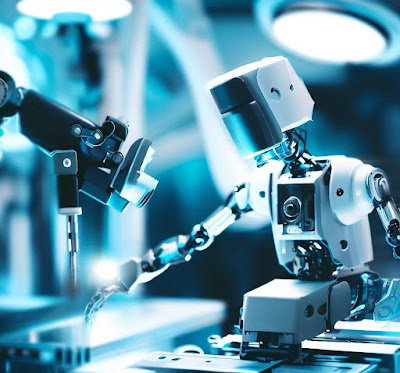Robotics in Medical Applications - Next Gen Tech
Robotics in Medical Applications: A Comprehensive Guide
The advancement in technology has enabled the integration of robotics into various fields including the medical industry. From assisting in surgeries to delivering medication, robotics in medical applications is transforming the way healthcare is delivered. The use of robots in medicine provides benefits such as increased precision and accuracy, improved patient outcomes, and reduced risks associated with human error. In this article, we will explore the various applications of robotics in medicine and delve into the benefits they bring to patients and healthcare providers alike. The advancements in technology have enabled the development of sophisticated robots that can assist in various medical procedures and provide a higher level of care. As the field of robotics continues to evolve, it is becoming increasingly clear that robotics has a bright future in the medical industry.
Robotic Surgery
Robotic surgery refers to the use of robots in performing various surgical procedures. This type of surgery is less invasive, provides a higher level of precision, and results in a faster recovery time compared to traditional open surgeries. Robotic surgery is widely used in gynecology, urology, general surgery, cardiology, and other specialties.
Telemedicine Robotics
Telemedicine robotics involves the use of robots to assist in remote patient care and consultation. These robots are equipped with cameras, sensors, and other communication tools to allow healthcare providers to interact with patients remotely. This technology is especially useful in rural areas where access to medical care is limited.
Rehabilitation Robotics
Rehabilitation robotics involves the use of robots to assist patients in physical therapy and rehabilitation. These robots are designed to help patients recover from various medical conditions such as stroke, spinal cord injury, and brain injury. They provide a controlled environment for patients to practice movements, increase their range of motion, and improve their motor skills.
Medical Delivery Robotics
Medical delivery robotics refers to the use of robots to transport medical supplies and equipment within healthcare facilities. These robots can be programmed to deliver a variety of items, including medication, laboratory samples, and medical supplies. They help improve the efficiency of the healthcare system by reducing the time and effort required for manual delivery.
Assistive Robotics
Assistive robotics refers to the use of robots to assist individuals with disabilities or limited mobility. These robots can be designed to perform a variety of tasks, including personal care, household chores, and physical therapy. They provide a level of independence for individuals who would otherwise require assistance from others.
Laboratory Robotics
Laboratory robotics involves the use of robots to perform various tasks in a laboratory setting. These tasks can include sample preparation, analysis, and data collection. Laboratory robots are designed to improve the accuracy and efficiency of laboratory processes, as well as reduce the risk of human error.
Robotic Pharmacy Dispensing
Robotic pharmacy dispensing refers to the use of robots to dispense medication in healthcare facilities. These robots are designed to improve the accuracy and efficiency of the medication dispensing process. They also reduce the risk of medication errors and provide a higher level of patient safety.
Biopsy Robotics
Biopsy robotics involves the use of robots to assist in the biopsy procedure. These robots are designed to provide a higher level of precision and accuracy in the biopsy process, reducing the risk of human error and improving the quality of patient care.
Diagnostic Robotics
Diagnostic robotics involves the use of robots to assist in the diagnostic process. These robots can be programmed to perform various tasks, including imaging, analysis, and data interpretation. They help improve the accuracy and efficiency of the diagnostic process, providing a higher level of patient care.
Research Robotics
Research robotics involves the use of robots to assist in scientific research. These robots can be designed to perform a variety of tasks, including data collection, analysis, and experimentation. They provide a controlled environment for researchers to perform their work, reducing the risk of human error and improving the quality of research outcomes.







.jpg)
.jpg)